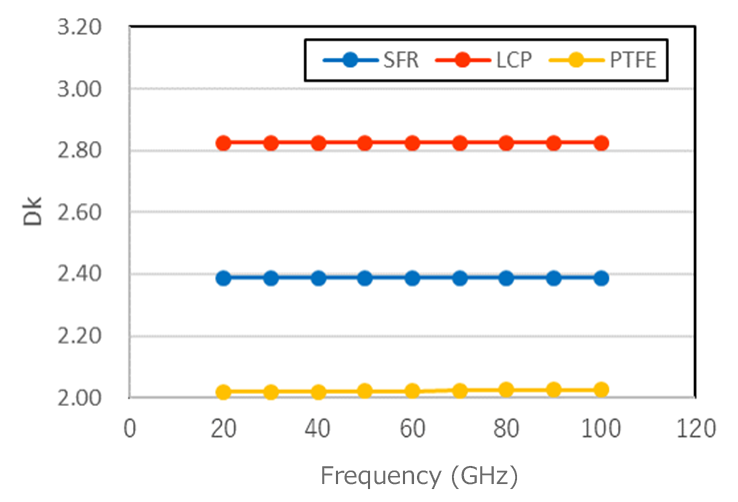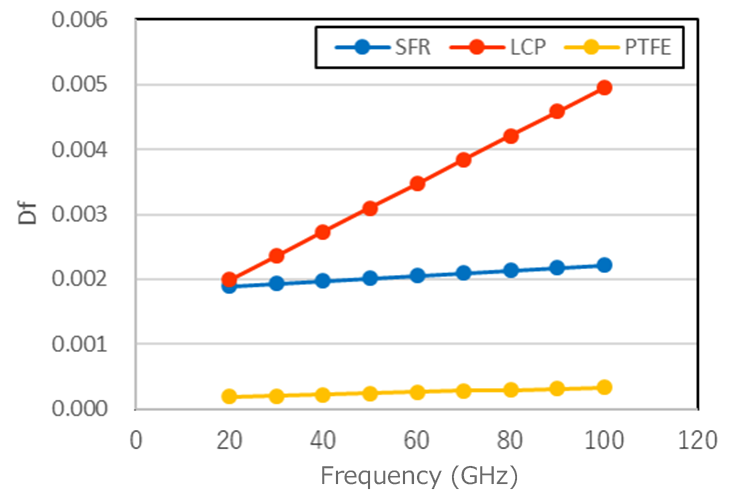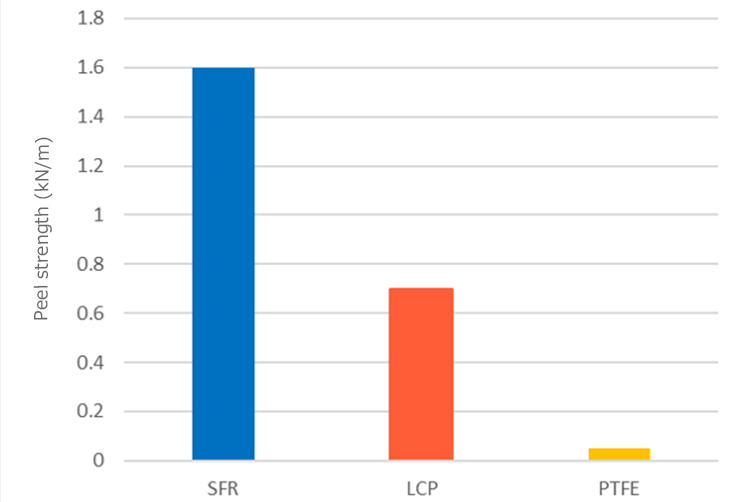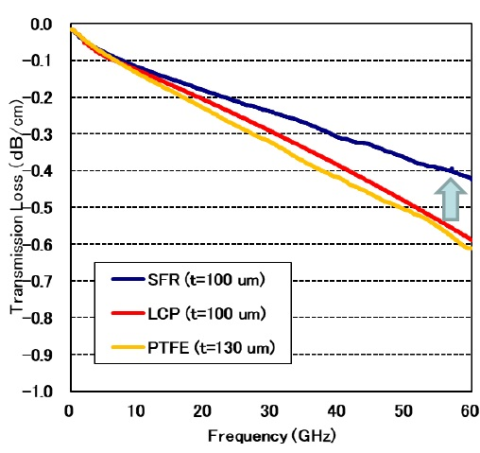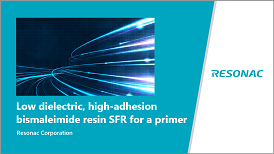As the communications industry pursues higher speed and larger capacity from 5G to “5G-Advanced” to even “Beyond 5G (6G),” more and more attention is focused on higher frequency bands from millimeter to sub-terahertz waves. This trend is driving the demand for circuit substrates used for communication terminals and base stations to possess properties capable of reducing signal attenuation, or transmission loss, that increases with higher frequencies.
Transmission loss is defined as the sum of dielectric loss, conductor loss, and scattering loss. Improving conductor loss is nearly impossible due to the industry’s exclusive use of copper as a wiring material, but dielectric loss can be reduced by lowering the substrate materials’ dielectric constant (Dk) and dielectric loss tangent (Df) to achieve low dielectric properties. Diminishing scattering loss requires the use of copper foil with low surface roughness, namely, roughness of the wiring/substrate interfaces.
It is difficult, however, to achieve both low dielectric properties and high adhesion to low-roughness copper foil with conventional and other substrate materials developed for high frequency applications, and even adhesives and adhesive sheets used to strengthen the adhesion between substrates and copper foil.
Resonac recommends its bismaleimide resin SFR as a primer providing both low dielectric properties and high adhesion to low-roughness copper foil. The use of our SFR as a substrate-copper foil adhesive can help reduce transmission loss on the printed circuit substrates for communication terminals and base stations in the 5G millimeter wave band.
Innovative Solution
Realizing low dielectric properties with few polar groups as well as high adhesion from the anchor effect of low elasticity
Epoxy resin is a conventional substrate material with high adhesion to copper foil, but its inferiority to low dielectric properties cause large transmission loss at high frequencies. Polytetrafluoroethylene (PTFE), known as a low dielectric material, cannot be used with low-roughness copper foil due to its weak adhesion to copper foil. Liquid crystal polymer (LCP), developed as another low dielectric material, has improved adhesion to low-roughness copper foil, but its low dielectric properties are insufficient.
Generally, achieving low dielectric properties requires a reduction in the number of polar groups, such as hydroxyl groups, in the material. However, reducing these groups leads to weaker adhesion and a trade-off between low dielectric properties and adhesive strength. For example, LCP contains many polar functional groups that offer a certain degree of adhesive strength while deteriorating its low dielectric properties. PTFE features low dielectric properties due to its small number of polar groups, but its adhesive strength is weak, and its high elasticity prevents resin from flowing into fine concave parts, with an anchor effect unlikely to occur.
To overcome these challenges, Resonac recommends the use of its bismaleimide resin SFR as a primer providing both low dielectric properties and high adhesion to low-roughness copper foil. Our SFR offers low dielectric properties with few polar groups, while its low elasticity (0.4 GPa@25℃) allows resin to flow into fine concave parts and achieves high adhesion to low-roughness copper foil for anchor formation.
Adhesion improved by the anchor effect of Resonac’s SFR
Product Features
Low dielectric properties: low Dk (dielectric constant) and low Df (dielectric loss tangent)
SFR does not outperform PTFE in the 20-100 GHz range, but has lower Dk and Df than LCP. With few polar groups, SFR does not exhibit the Df frequency dependence as with LCP. See the graphs below.
Comparison of Dk and Df in 20-100 GHz @room temperature (24°C, 52%)
[Condition]
Dielectric measurement method: balanced-type circular disk resonator (BCDR) method,
Sample thickness:SFR;111μm、LCP;93μm、PTFE;100μm
- ※The data shown are representative values that represent examples of the results of measurements, calculations, etc., and are not guaranteed values.
High adhesion to copper foil
SFR’s peel strength exceeds the generally recognized level of 1.0kN/m or higher and provides excellent adhesion to low-roughness copper foil. See the graph below.
Comparison of peel strength for low-roughness copper foil
[Condition]
Measurement method: 90° peel strength test, Base material: low-roughness copper foil
- ※The data shown are representative values that represent examples of the results of measurements, calculations, etc., and are not guaranteed values.
Low transmission loss
SFR reduces transmission loss by about 20% at 60 GHz, compared with LCP and PTFE. Resonac considers the difference between SFR and LCP as the difference in dielectric loss based on Dk and Df. The difference between SFR and PTFE includes scattering loss and dielectric loss. SFR can be applied to low-roughness copper foil, whereas PTFE can only be used with ordinary copper foil due to its poor adhesion to the low-roughness type. Resonac believes these properties are greatly affected by the difference in scattering loss. See the graph below.
Comparison of transmission loss
[Condition]
Transmission structure: microstripline, Temperature/humidity: 25°C/50% RH,
Characteristic impedance: 50Ω, Calibration: TRL,
SFR, LCP: low-roughness copper foil, PTFE: ordinary copper foil
- ※The data shown are representative values that represent examples of the results of measurements, calculations, etc., and are not guaranteed values.
Date: 16 March, 2023
Need More Information?
Click here for Resin solid concentration, property comparison with other resins.
Contact Us
Please don't hesitate to contact us if you have any questions.


